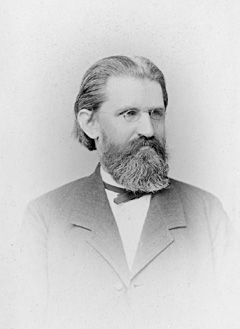About the project
Aims
The new edition of the Frankish capitularies aims to take their unique history of transmission into full consideration.
While capitularies originated as individual texts from deliberations and assemblies at court, they are transmitted exclusively in collections produced locally by royal agents. The edition will therefore pursue two goals during one joint process of exploration and editing: (1) each capitulary will be edited and translated as an individual text, reconstructing its original form, to be published in print; (2) each collection will be published as a digital edition online, making it easier for scholars everywhere to study the way in which capitularies were enacted locally and passed on.
The digital edition, with its transcriptions of the various collections, not only provides the material for the printed edition, but is meant as its permanent counterpart. For historians are not only interested in reconstructed original texts but also in their (re-)combination and (re-)ordering, and in the actual wording in which contemporaries transmitted, read and used these texts. The combination of digital and printed edition elucidates the road from individual manuscript to critical text while respecting the historical value of each collection. At the same time the project’s website provides the opportunity to combine and present new findings on the form and transmission of capitularies.
Edition schedule
The publication of the texts will progress in chronological sequence according to the reign of their respective issuer, starting with the capitularies of Louis the Pious (814-840). The transcription of the relevant manuscripts was completed at the end of 2017, with the critical edition due for print thereafter.
The next phase will see the transcription and publication of capitularies from 840 to 920, followed by the capitularies from 507/511 to 813. Therefore, the collections of capitularies as transmitted within the various manuscripts will only be published digitally in part at first, with the remaining segments to be added successively as the edition progresses.
The digital edition is being taken care of by a team in Cologne under the direction of Prof. Karl Ubl, while the critical edition is being prepared jointly by the five editors.
Editorial history
Previous editions
Scholarship showed a distinct interest in capitularies from an early stage. Already in 1677 an edition was published by Étienne Baluze. The Monumenta Germaniae Historica (MGH), founded in 1819, planned a new edition which was intended to meet the scholarly standards of a modern critical edition. However, the resulting edition by Georg Heinrich Pertz, published in 1835, despite considering more manuscripts than Baluze, was soon considered outdated due to further manuscripts being found, as well as progress in the field of constitutional history. For these reasons Georg Waitz, who succeeded Pertz in directing the MGH, soon commissioned Alfred Boretius to prepare a new edition. Its first volume was published in 1883 with the second one finished for print by Victor Krause due to Boretius’ deteriorating health (1897). In turn this edition was criticised almost immediately for technical shortcomings, leading to calls for its replacement. In his classic introduction to capitularies, François Louis Ganshof stated: “A new edition of the capitularies is one of the most pressing needs of medieval scholarship” (Ganshof 1961, p. 22).



Preparatory work on a new edition
Because of the sustained criticism of the old edition, in 1979 the MGH commissioned Hubert Mordek with the preparation of a new edition. Mordek directed this project until his death in 2006 without being able to complete the edition. His valuable preparatory work, including a survey of the extant manuscript transmission, informs his Bibliotheca capitularium regum Francorum manuscripta (Mordek 1995) which offers detailed and extensive descriptions of every manuscript containing capitularies. The number of 282 manuscripts bears witness to the wide dissemination of these texts across the Frankish realm and beyond. In the course of his work Mordek came across 27 texts that had been overlooked in previous editions. These new texts are presented in preliminary editions in the Bibliotheca’s appendix.
After Mordek’s death the MGH decided to split the project in two. For the time from the sixth century to Charlemagne’s death (814), Mordek had left behind significant preparatory work. This part was therefore entrusted to Michael Glatthaar (Freiburg), Mordek’s student. For capitularies after 814 such preparatory work was lacking, and Klaus Zechiel-Eckes (Cologne) stepped in. Zechiel-Eckes took part in the production of a sample edition of Charlemagne’s most influential capitulary, the Admonitio generalis from 789. This edition was published by the MGH in 2012 (repr. Glatthaar 2013a). However, Zechiel-Eckes could not properly start with his part of the edition prior to his own death in 2010. In March 2011, this part was therefore entrusted by the MGH to a group of editors: Stefan Esders (Freie Universität Berlin), Steffen Patzold (Universität Tübingen) and Karl Ubl (Universität zu Köln).
